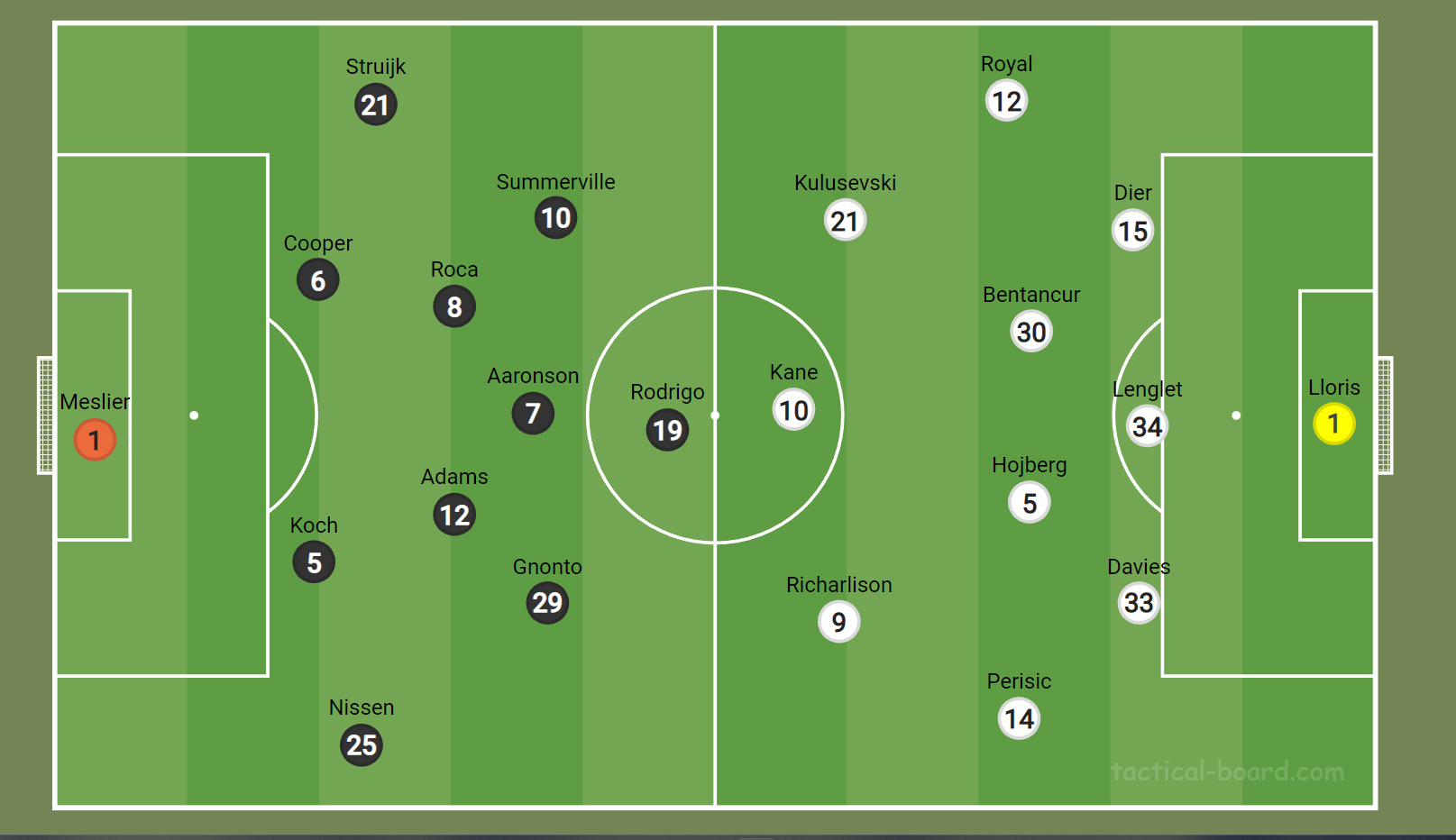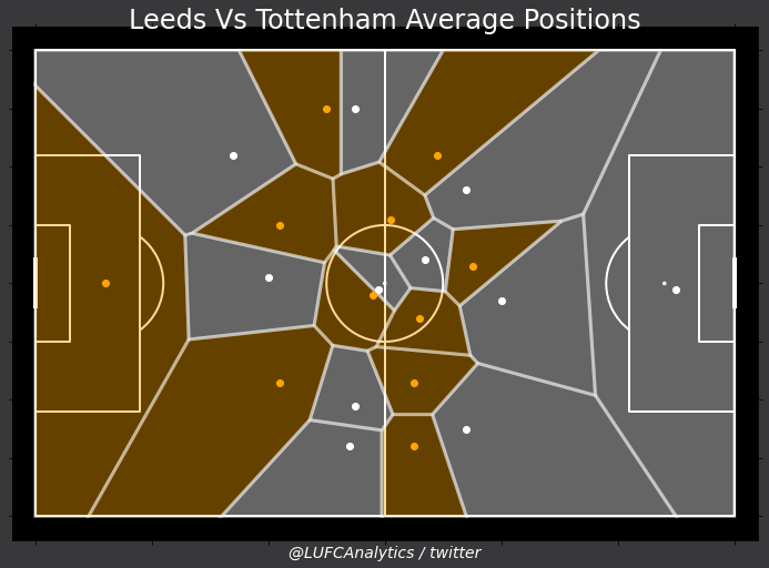Tottenham 4 -3 Leeds United
Tottenham : 3–4–3 | Leeds: 4–2–3–1
Neither team offered a real surprise with their tactical set-ups.
Tottenham persisted with Conte’s 3–4–3 and his tendencies were on full show too. Attacking full-backs. Building out from the back. Narrow wingers. All there to see.
Marsch too lacked a jack-in-a-box tactical setup. The American opted again for the 4–2–3–1 as he has in every game within this premier league season. This 4–2–3–1 again seemed flexible interchanging towards a 4–2–4 with Aaronson pushing forward to join the attacking unit.
LUFC - Orange | Tottenham - White
Above we can see a Voronoi diagram for the average positions of players on the field. A more detailed explanation of Voronois can be found here…
Tottenham
If we look at Tottenham to start with, defensively the three central defenders at the back and how they offer width in possession with two centre-halves being spread wider than the outside of the 18-yard box. This leaves space centrally but it is worth noting that the central centre-back only has to deal with one attacker within close proximity. This limits the challenge Leeds are putting on their ability to hold their vertical height. Looking wider in the defensive line Tottenham full-backs have been placed very high, on average both players received the ball in front of the halfway line.
Looking higher up into Spurs’ midfield their two central midfielders are positioned very narrowly, both within the centre circle, almost vertically aligned. At first, this looks like a wasteful use of the midfield as both players occupy similar positions but on further inspection, it becomes clearer why though. Instead of dominating the middle of the pitch, Tottenham now dominate the wings.
Inspecting the attack now, there is variation in the roles that the front three roles take up. Centrally Harry Kane’s influence is obvious, Kane has space in front of him to receive in and space behind to receive the ball behind the defensive line in a 1v1 situation. On the left Richarlison receives the ball in deeper positions on average. I would argue this shows how frequently he rotates with Perisic at left back, so his average position is a little deeper than an out-and-out attacker. Kulusevski on the right was able to get in behind throughout the game, on the graphic the Swedish player is positioned closest to Leeds’ goal often receiving the ball closer to the goal than Leeds’ average positioning. A secondary factor in this positioning is that Kulusevski often receives the majority of the time in the final third rather than assisting in the build-up of chances.
Leeds United
Jesse Marsch’s tactics for this game are interesting too as we can see his strengths and weaknesses on offer throughout the match.
Overall the hybrid 4-2-3-1 | 4-2-2-2 has been rolled out again. As the weaker squad in the match, it is necessary to remember that some of Leeds’ actions will be responses to the questions Tottenham have posed.
At full-back, the visitors played Pascal Struijk on the left partnering with Rasmus Nissen Kristensen to defend the opposing wing. If we start our investigation on the left wing a combination of factors lead to Struijk struggling to affect the game offensively and being in a deeper position. Earlier, in the Tottenham discussion, we mentioned how high Kulusevski received the ball therefore Struijk hesitated to leave too much distance between himself and his player wary of having to recover when his team did lose the ball. In addition, the Holland international has previously been known as a central defender and so his ability to push forwards is limited even so. On the right, a different combination of factors creates the opposite situation, the Dane pushes forwards aggressively in possession. One reason for this is his previous roles played as an attacking wingback , combine this with the winger being so narrow infront of him and you can understand why he would push forward into that space.
The next point of interest is Leeds’ attacking 4 (including Aaronsen). All four attacking players are extremely narrow, no player is wider than the width of the box on average.
On the right Gnonto has come inside massively, being in-line with our centre-back. Whilst Summervillle on the left stays slightly wider, this is so Kristensen can get higher and have an attacking impact and masks Struijks weaknessses offensively. In theory this should create an overload as Leeds have 4 players in central attacking positions against Tottenhams 3 centre defenders.

